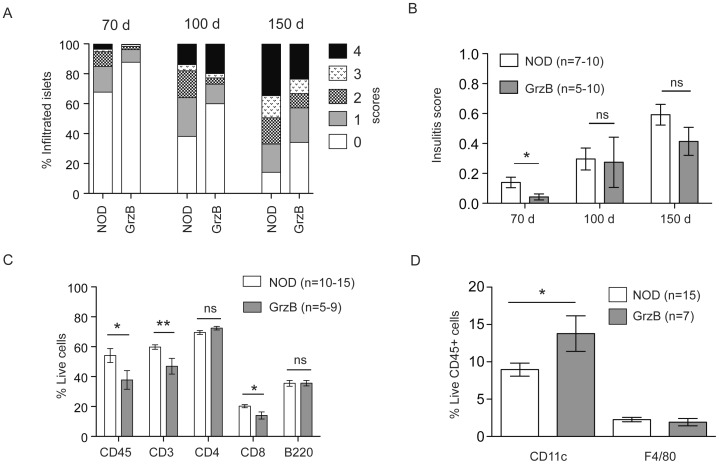Figure 3. Granzyme B deficient NOD mice have reduced insulitis at 70 days of age, which is not maintained at 100 days.
(A) Pancreata from female NOD and granzyme B−/− (GrzB) mice were harvested at 70 days of age (n = 10, total islets scored: NOD = 1004 islets, Granzyme B−/− = 1443 islets), 100 days of age (n = 5–7, total islets scored: NOD = 572 islets, Granzyme B−/− = 548 islets) and 150 days of age (n = 10, total islets scored: NOD = 688 islets, Granzyme B−/− = 1079 islets) and scored for insulitis on frozen sections stained for insulin. The data are the mean of the percentage of islets with each score. (B) For each mouse the insulitis score was calculated as described in material and methods, and data are the mean±SEM insulitis score. Insulitis is significantly reduced in 70 day old granzyme B−/− mice compared to NOD (*p = 0.0274), but not at 100 days or 150 days. Data analyzed by unpaired Student’s t test. ns = not significant. (C) Flow cytometric analysis of islets from female NOD and granzyme B−/− (GrzB) mice at 70 days of age. Live cells were gated using propidium iodide exclusion. CD45 is the proportion of live cells expressing CD45. CD3 is the proportion of live CD45+ cells expressing CD3. The proportion of CD4+ and CD8+ cells was determined as the percentage of live CD45+ and CD3+ cells. The percentage of CD45+ cells (*p = 0.0461), CD3+ cells (**p = 0.0087) and CD8+ cells (*p = 0.0141) but not CD4+ cells was significantly reduced in granzyme B−/− mice. Mean±SEM for n = 10–15 NOD mice and n = 5–9 GrzB mice is shown. 150 islets were used for each sample. Data analyzed by unpaired Student’s t test. (D) The proportion of live CD45+ cells in the islets from 70 day old female mice that were CD11c+ or F4/80+. The percentage of CD11c+ cells (*p = 0.0286), but not F4/80+ cells (p = 0.5189) were increased in granzyme B−/− mice. Data analyzed by unpaired Student’s t test.

